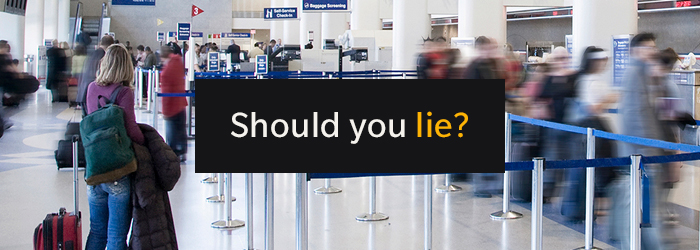
Should You Lie to Your Customers About Their Expected Wait Times?
It is widely accepted that knowing how long a wait will be can dramatically reduce how long the wait feels. Conversely, blindly standing in a long line without any idea of how long it will take to get to the front can make a ten minute wait feel like forever.
That said, there is another school of thought that suggests there is a time and a place for providing customers with accurate wait times. In some cases, would it actually make sense to buffer the wait time and give your customers an estimated wait time that is longer than it is likely to be?
For either approach, the overarching goal is to enhance the customer experience. However, how do you know which strategy is most appropriate for your business? Here are some considerations:
Is accuracy really necessary?
Accurate wait times are ideal for industries where customers need to know what to expect in order to plan ahead. This includes industries like transit and ground passenger transportation, postal services, and the airline industry (for everything from accurate itineraries to accurate departure times). In such use cases, an accurate wait time serves to enhance the customer experience because reliability is instrumental to a positive customer experience.
However, while accurate wait times are important, they needn’t be absolutely exact. Posting a specific wait time is a commitment, and not upholding that promise can compromise the customer experience. Instead, a slight buffer can keep customer expectations under control as well as mitigate customer frustrations in the event of potential service disruptions.
For example, let’s say you manage the New York subway system. Most variables of the customer journey are fixed. You know how long it takes passengers to board a train, how long it takes for the train to get from A to B, and the elapsed time between a train arriving to a station and leaving for the next one. With that knowledge, it’s easy to calculate accurate estimates as to when a train will arrive. This information can feed into a display system to inform passengers exactly when they need to be on the platform to be on time to board. However, even if you know the train will be arriving in precisely 3.5 minutes, it is more ideal to display “Train arriving within 5 minutes.” This is factual and can give a 90-second buffer that serves to keep customers on schedule and also account for service disruptions that can occur.
Is it better to meet or exceed expectations?
In other contexts, some people feel 100% accuracy might not the best way to design your queue management strategy. The theory here is that it might be better to give people a slightly buffered wait time estimate so you are more likely to come in under the given timeframe. This can prove useful in contexts where a customer has a long wait ahead of them and slightly overestimating wait time gives the impression of “getting ahead,” which can improve the overall customer experience.
Consider a roller coaster ride. Just next to the queue, a display board shows the wait time estimate. Of course, it’s easy for the theme park to determine an almost perfect prediction as to how long that line will take - that’s a simple calculation refined by data collected from thousands of rides. However, perfect accuracy is arguably not the best strategy here. In this case, the customer is in line and will be until it’s their turn to board the rollercoaster. This presents an opportunity to exceed customer expectations by adding in a small buffer. It comes down to framing. For example, imagine the line will actually take 8 minutes. If the display board suggests the wait time is 10 minutes, or even Less than 10 minutes, then the actual wait will be less than the expected, causing customers to develop the impression that they’re ahead of schedule.
Ranged wait times also provide a buffer to the business while still fulfilling customers expectations. Publishing an expected wait time of 12 minutes as 10 -15 Minutes creates a buffer to deal with the unexpected while still providing customers with a positive experience.
Learn about solutions to determine accurate wait times and you can be the judge of the best ways to use that data to meet or exceed customer expectations within your business.
SUSCRIBIRSE
Suscríbase para mantenerse al día con los nuevos productos, información y noticias sobre los recursos.
ENTRADAS DE BLOG RECIENTES
Theft at the Register: How Strategic Queue Design Protects Profits
Leer el artículo completoRapid Deployment Crowd Control: JetTrac Portable Barriers For The Biggest Spaces
Leer el artículo completo4 Psychological Reasons Your Customers Hate Waiting In Line
Leer el artículo completoFrom Bleachers To Bookstores: 4 Campus Crowd Control Solutions
Leer el artículo completo








